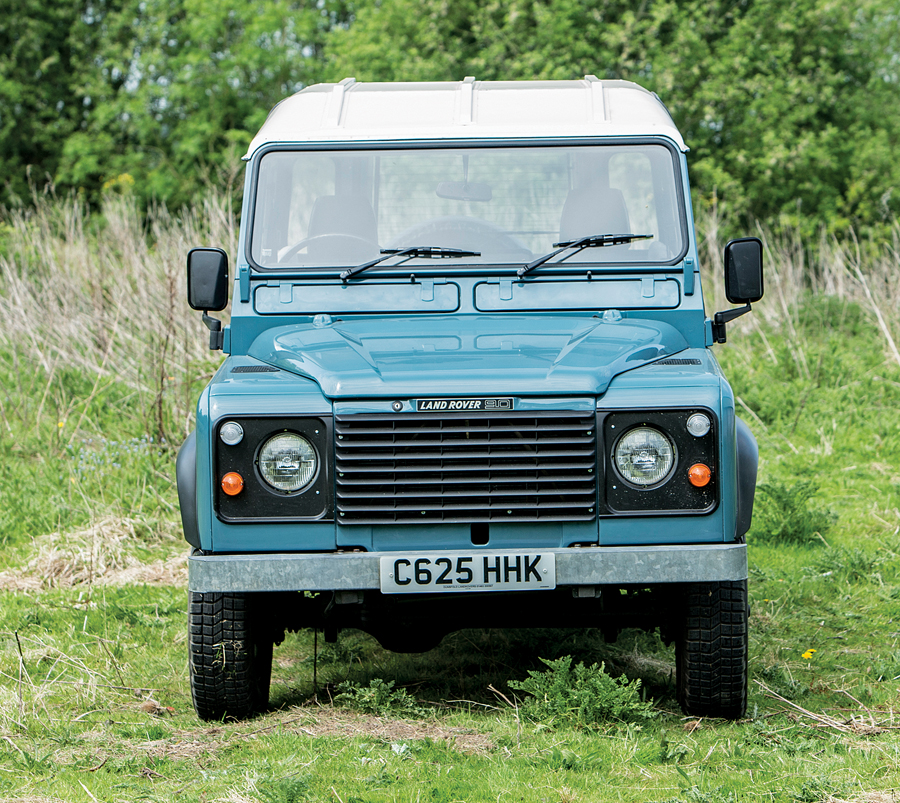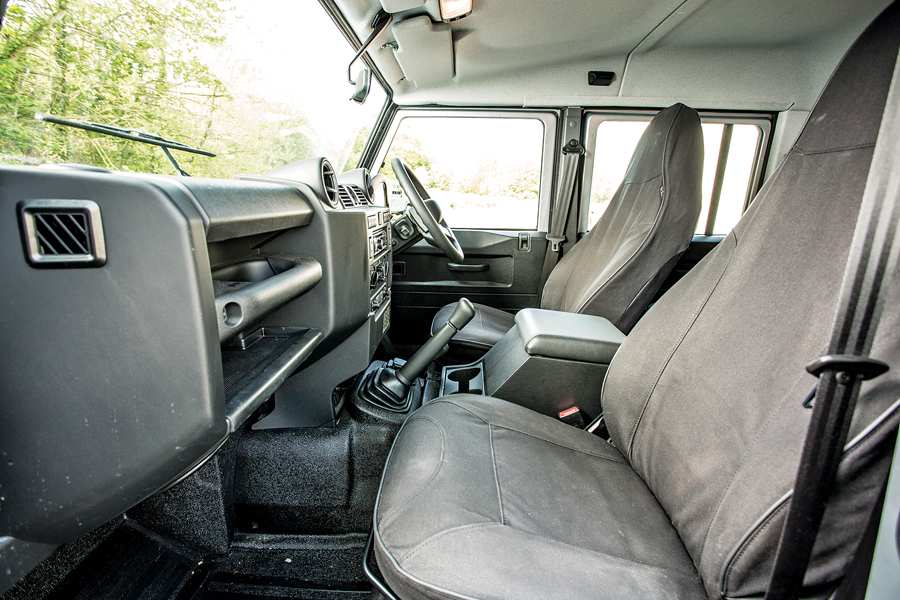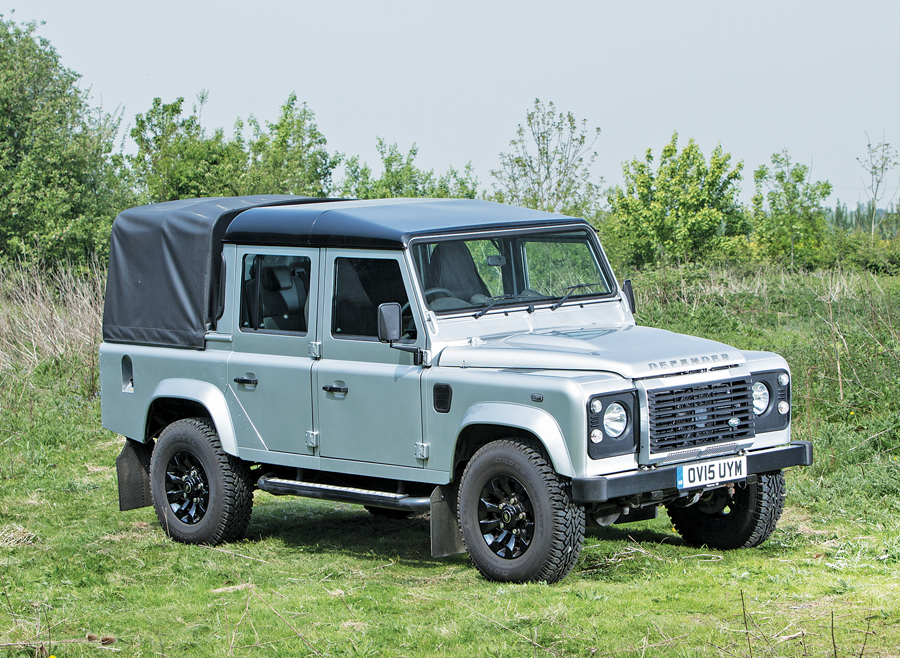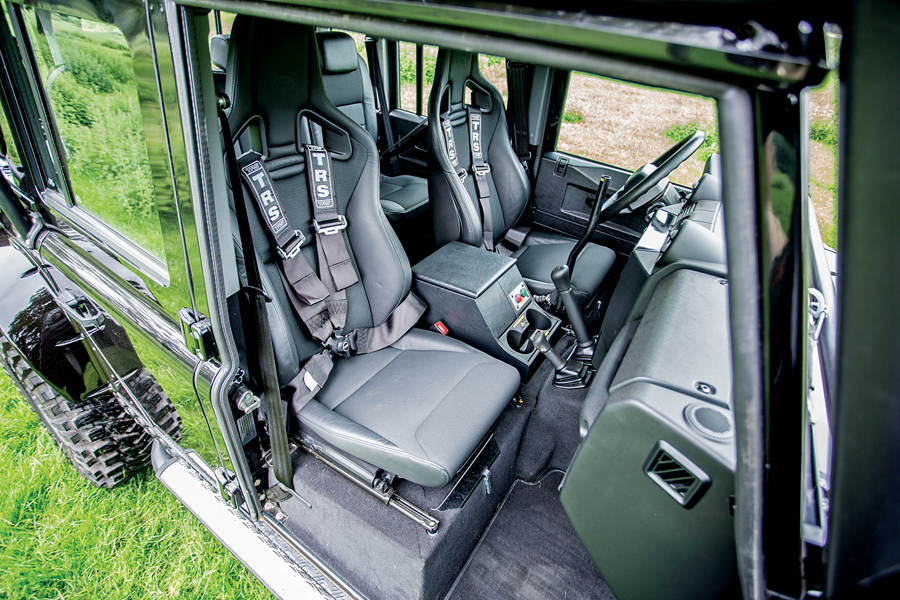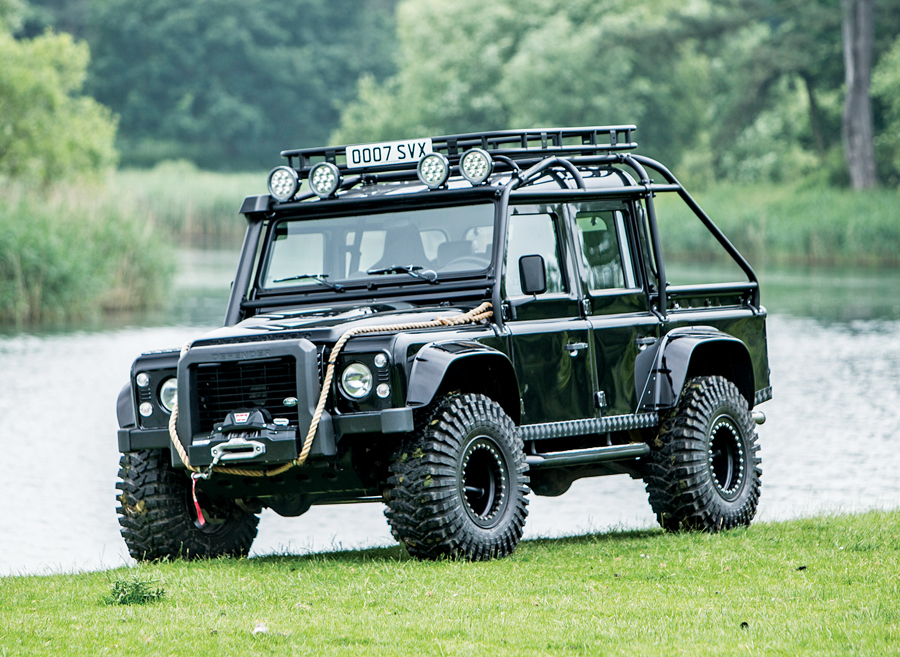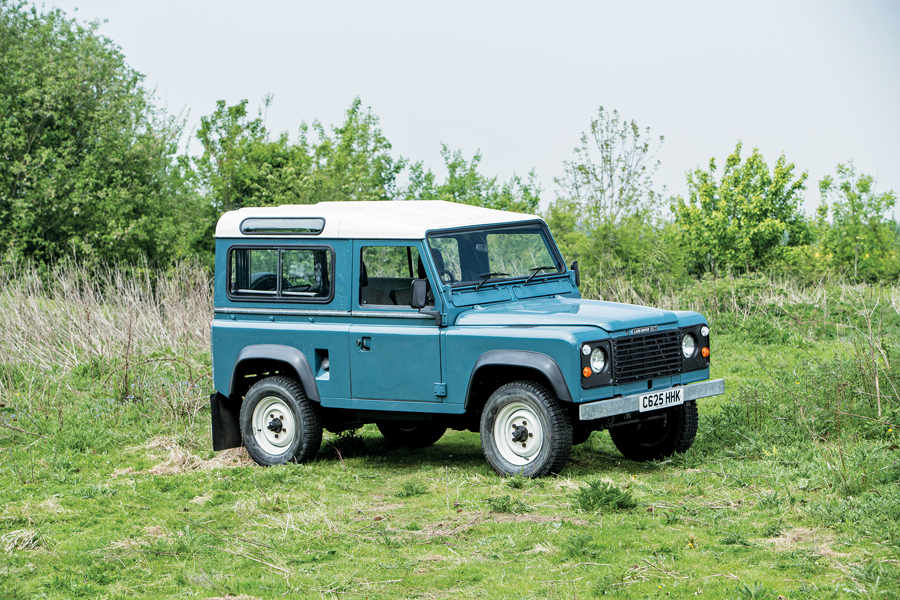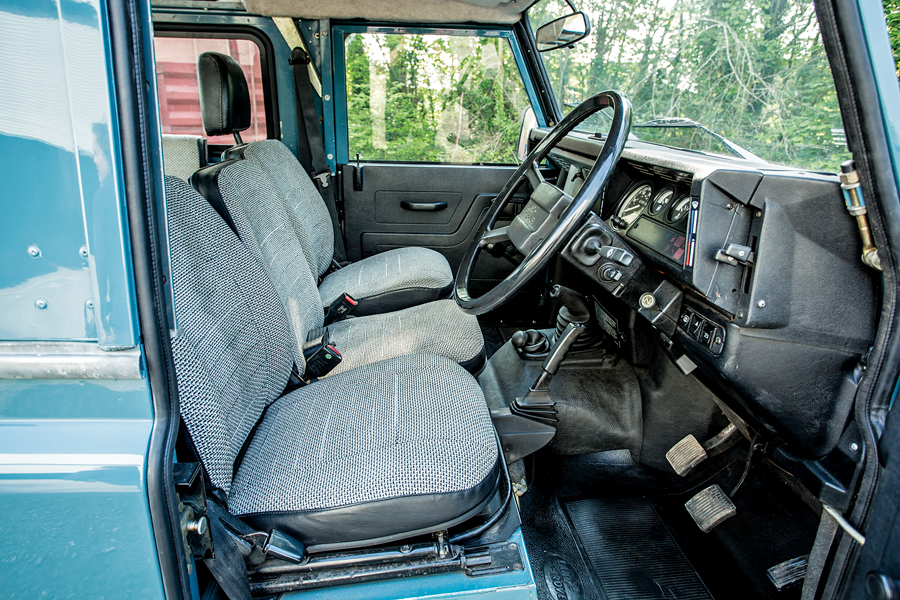Quite a few Land Rovers crossed the block at Bonhams’ July 13 Goodwood Festival of Speed auction, but three Landies in particular give us an interesting glimpse at the current market.
All three of the recent Land Rovers sold way over their estimates, while the 1963 80-inch Series I was bang on the money. What is it about Landies these days?
Inspired by the U.S. Army’s wartime Jeep, developed in haste and intended for short-term, small-scale production, the Land Rover would defy its creators’ initial doubts.
Rover bosses saw the need for a tough four-wheel-drive utility vehicle to serve the needs of the agricultural community during the immediate post-World War II years, but the Land Rover’s runaway success took the company by surprise.
The necessity of using corrosion-resistant aluminum panels at a time of severe steel shortages turned into a positive for the Land Rover. The use of existing components kept production costs down and cut development time.
During more than 60 years in production, the supremely versatile Land Rover adapted to innumerable civilian and military roles.
Following the launch of the extensively revamped Land Rover 110 in 1983, a similar short-wheelbase version was added to the line-up the following year.
The 90 incorporated all the improvements pioneered on the 110, including coil-sprung suspension, one-piece windscreen, 5-speed gearbox and a revised interior, while adding a refinement of its own — wind-up windows — that was subsequently featured on the larger model.
Engine options were a 2.25-liter petrol four, a 2.5-liter diesel four, and the 3.5-liter petrol V8. The latter endowed the 90 with decent performance by Land Rover standards. Motor magazine recorded a 0–60 mph time of 14.7 seconds and a top speed of 90 mph. This was just what the emerging off-road leisure market wanted.
Enter the Defender
Following the successful reception of the all-new Land Rover Discovery model in 1989, it was decided to give the traditional Land Rover its own name: Defender. The Defender got the 200Tdi turbo diesel engine that had debuted in the Discovery.
This extensively revised power unit brought increases in maximum output (107 bhp), torque (195 ft-lb) and fuel economy (25%) when compared with the old, normally aspirated diesel. Disc brakes and power steering came as standard during the 1990s, together with a host of other improvements, including a new 300Tdi turbo-diesel engine.
By the new millennium, the Defender had gained anti-lock brakes, Electronic Brakeforce Distribution and Electronic Traction Control. All of these innovations were aimed at improving traction to keep in front of its increasingly capable rivals.
There was also a new 122-bhp Td5 5-cylinder turbo-diesel engine from 1998. Steel doors, enabling the use of electric window lifts and central locking for the first time, were new for the 2002 model year, as were heated seats and a new model: the 110 Double Cab.
Ford’s Duratorq 4-cylinder diesel (122 bhp and 265 ft-lb) was used from 2007, and with increasingly stringent emissions-control regulations just over the horizon, it was downsized from 2.4 to 2.2 liters for the 2012 model year, although it remained as powerful as its predecessor — and quieter as a bonus.
Despite, or perhaps because of, being visually related to the very first Land Rover of 1948, the Defender kept a steadfastly loyal customer base. Indeed, it managed to outsell the Range Rover in the U.K. during 2013. Incremental improvements appeared regularly until production of the traditional Land Rover Defender ceased and ended an era in January 2016.
These three Land Rovers sold at Bonhams Goodwood Festival of Speed sale on July 13:
- 1985 Land Rover 90 V8, Lot 310, sold at $23,454, including buyer’s premium.
- 2015 Land Rover Defender 110 XS, Lot 321, sold at $44,638, including buyer’s premium.
- 2014 Land Rover Defender SVX, Lot 379, sold at $480,915, including buyer’s premium.
All three went well over their estimates, although the other Land Rover in the sale, an older-restored 1952 80-inch at the other end of the Landie spectrum, was right on the nail at $31,776.
Why are Landies so hot in the U.K. and, to a slightly lesser degree, in the United States?
The short answer is nostalgia for a much-loved national treasure.
From the time that the end of Defender production was confirmed — and finally ended 68 years after Land Rover production began in 1948 — all Land Rover prices rose, especially late-model 110s.
Many were still sold as working vehicles, but for much of 2016 it seemed that every classic-car dealer had one of the run-out Heritage editions hanging about somewhere, to be sold a few months later for a healthy profit.
The Land Rover is a proper workhorse, with the 110 legally able to tow 3.5 tons. The Ford Ranger can pull the same and could always be put on the road for a lot less money, but it just doesn’t have the right image for those of the hunting, shooting and fishing persuasion, particularly if their businesses revolve around outdoor activities.
Nostalgia is one big reason for big sales, but these three, or two of them anyway, were inexplicably expensive. Let’s take a look at each one in order.
The 1985 Landie
The 1985 Land Rover 90 was one of the first of its coil-sprung type that replaced the Series III, appearing a year after the rebranded 110 in 1984, although its wheelbase is nearer 93 inches.
Defender badging came in 1989, by which time all Landies were permanent four-wheel drive, still with high and low range and a central diff lock.
Our subject Landie was clean, with just two owners, although V8s are not popular in today’s market because the motor, borrowed from the Range Rover, is incredibly thirsty when powering something with the aerodynamics of a brick. This engine also is not as torquey as any of the turbo diesels.
Perhaps that was the reason it was estimated (at no reserve) at £3,500–£5,000 ($4,670–$6,670), which is the real danger area for a functioning Landie. You should never buy one any cheaper unless you want a heap of trouble.
Even with nearly 80,000 miles on the clock, it was no surprise that it sold for more, but here it smashed that lower estimate by a factor of five, bringing the price to way over top retail.
This Landie’s clean, original condition with a well-preserved interior and no evidence of hard work are the obvious explanations.
Another reason is that V8 Landies will become truly collectible for their relative rarity.
The V8 option was quietly dropped for Europe in 1994, although in 2017 Land Rover remanufactured 150 Works 400 bhp 5-liter special editions to commemorate the 70th birthday. They cost £150,000 each and sold out in a month.
The 2015 Double Cab
This 2015 Defender 110 XS Double Cab was one of the last built.
The double cab was offered from 2002, and the XS is the luxury version. By this time, Land Rovers were using the 2.2-liter Ford Duratorq — the same engine fitted to the Ranger.
This Landie was offered at no reserve with a lower estimate of $24,000 — which it almost doubled.
With only one owner and 6,000 miles — and from the same collection as the 90 — it was in super-clean condition. I’ll put the generous price down to someone determined to have the nearest they could get to a new, proper Landie.
The two extra sets of alloy wheels with new tires — probably worth $4,000 — sweetened the deal as well.
The James Bond Landie
The 2014 SVX, also a double cab, is easier to explain, as it’s a James Bond film star.
History has shown us that appearing with 007 usually magnifies a car’s price by a factor of 10. This happened here.
This was one of 10 built by Land Rover SVO for the film “Spectre” (the work was actually done by Bowler, which is famous for its racing off-roaders). The Landie still had the large vertical handbrake that controls the rear brakes for stunt work.
Regular Land Rover parking brakes are a transmission-mounted drum brake, which you never, ever operate while moving. Most of the other “Spectre” Landies had this feature removed or disconnected.
This Landie has massive wheels and 37-inch all-terrain tires. The engine was chipped up from 120 bhp to 185 (and 368 ft-lb of torque). The Landie also was equipped with internal and external roll cages and SVX rear badging.
This Landie still had marks on the bonnet (hood) left from the filming work. It was estimated to make $300k or more (the last one sold, at RM Battersea, fetched $300,141). In the end, it sold for 50% more than the RM Landie. Without the Bond connection I’d put its price in the $50k–$60k range.
The price of each of these made sense to each of their buyers, and in time will make sense to the rest of us too. ♦
